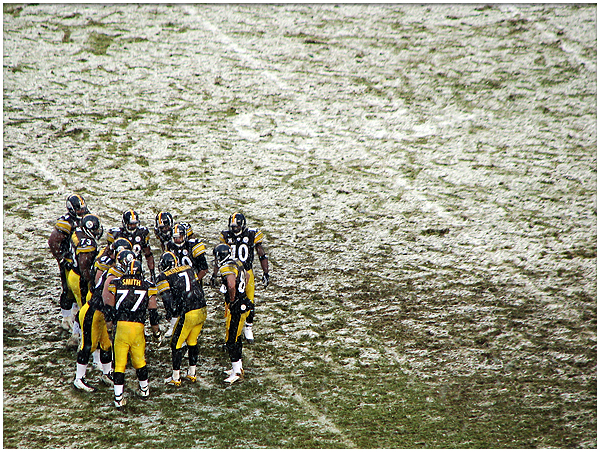Football Freakonomics: The Frozen Conundrum
The following is a cross-post from NFL.com, where we’ve recently launched a Football Freakonomics project.
Well, it’s January. And even though my team stumbled into inglorious, injury-plagued defeat, the most exciting football is yet to be played — some of it in very cold weather.
So we thought it was time to take a look at the various effects, and hidden side, of cold weather. That’s the focus of our latest installment of Football Freakonomics.
It is no secret that weather, cold or hot, has a significant effect on athletic performance. I don’t want to start an argument here about what constitutes a sport and what doesn’t, but I will say that the most frustrating six hours of my life was spent on a lake in upstate New York trying to coax some walleye through a hole in the ice. Brrr!
One of the first football metrics we looked at seemed to confirm that playing in the cold is a hard task, especially when you’re not used to it. Consider teams who play in a dome. In our analysis, when dome teams traveled to play cold-weather teams, dome teams won only 20 percent of the time. Compare that to warm-weather teams, who won 37 percent of their games against cold teams. (Granted, the NFL has only 6 dome teams, so we’re not talking a huge sample here.)
It would seem obvious that playing outdoors as winter sets in makes the passing and kicking games especially hard. Indeed, if you compare stats like field-goal percentage and pass-completion percentage in outdoor versus indoor stadiums as the season progresses (see details in the graphic here), this theory is borne out, at least in small measure. Here, covering games played from 2007-2011, is a look at completion percentage:
|
Completion percentage
(from 2007-2011) |
||
|
Month
|
Indoor stadiums
|
Outdoor stadiums
|
|---|---|---|
| Sept. | 62.9% | 61.0% |
| Oct. | 63.7% | 60.8% |
| Nov. | 62.4% | 60.6% |
| Dec. | 63.2% | 59.2% |
| Jan. | 61.1% | 56.4% |
Seeing those numbers, you’d probably expect overall scoring to drop as the mercury drops.
Surprisingly, that’s not the case. As Brian Burke at Advanced NFL Stats determined after analyzing scoring during the 2002-2006 seasons: “It doesn’t appear that cold weather reduces scoring.” Cold weather does, however, seem “to slightly enhance the spread between winner and loser by depressing the score of the loser. This is likely due to the ‘dome at cold’ effect.”
So even though it’s a bit harder to complete passes and kick field goals in colder weather, NFL teams end up scoring just about the same number of points. Why? One good reason may be technology: players’ gear and uniforms, field surfaces, and toasty benches probably help compensate for the harsh natural conditions.
We also wondered if cold- and warm-weather teams draft players based on whether they played at cold- or warm-weather colleges. In short, the answer is no. (See this graphic for details.) I guess with the multitude of factors that teams need to consider when making a draft pick, the question of whether your guy is more acclimated to heat or chill just doesn’t register as very important.
That could change, obviously, if someone ever compiled evidence that, for instance, cold-weather college players end up performing better for cold-weather teams than warm-weather college players do.
One wrinkle worth considering: certain position players are indeed much more likely than others to come from warm- or cold-weather colleges. Here are the top and bottom three positions drafted from warm colleges:
|
Percentage of players draft from warm-weather colleges
|
|
|
Top three positions
|
|
|---|---|
|
Position
|
Percentage
|
| Defensive line | 74.4% |
| Wide receiver | 73.5% |
| Running back | 70.3% |
|
Bottom three positions
|
|
|
Position
|
Percentage
|
| Punter | 66.7% |
| Tight end | 65.0% |
| Offensive line | 60.8% |
At least now we know why offensive linemen love to wear short sleeves even in 20-below weather: they’re used to it! I bet they’re pretty good at ice-fishing, too.


Comments